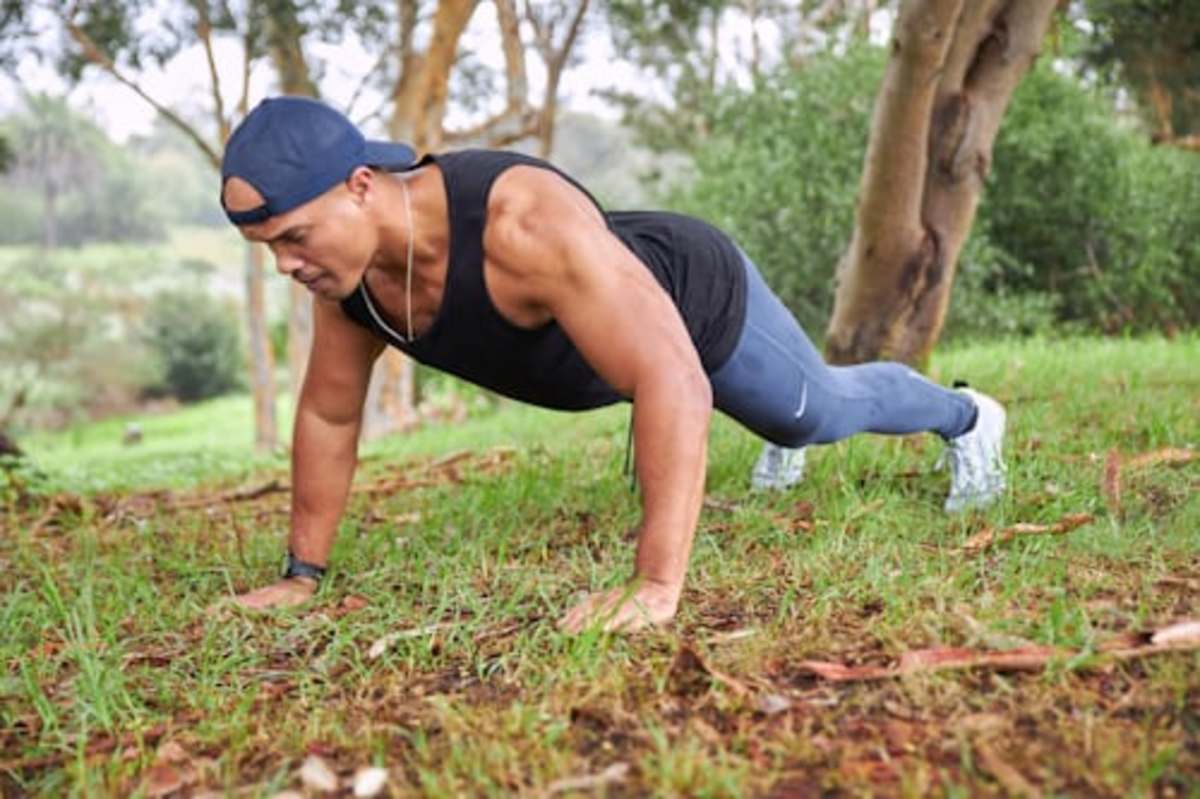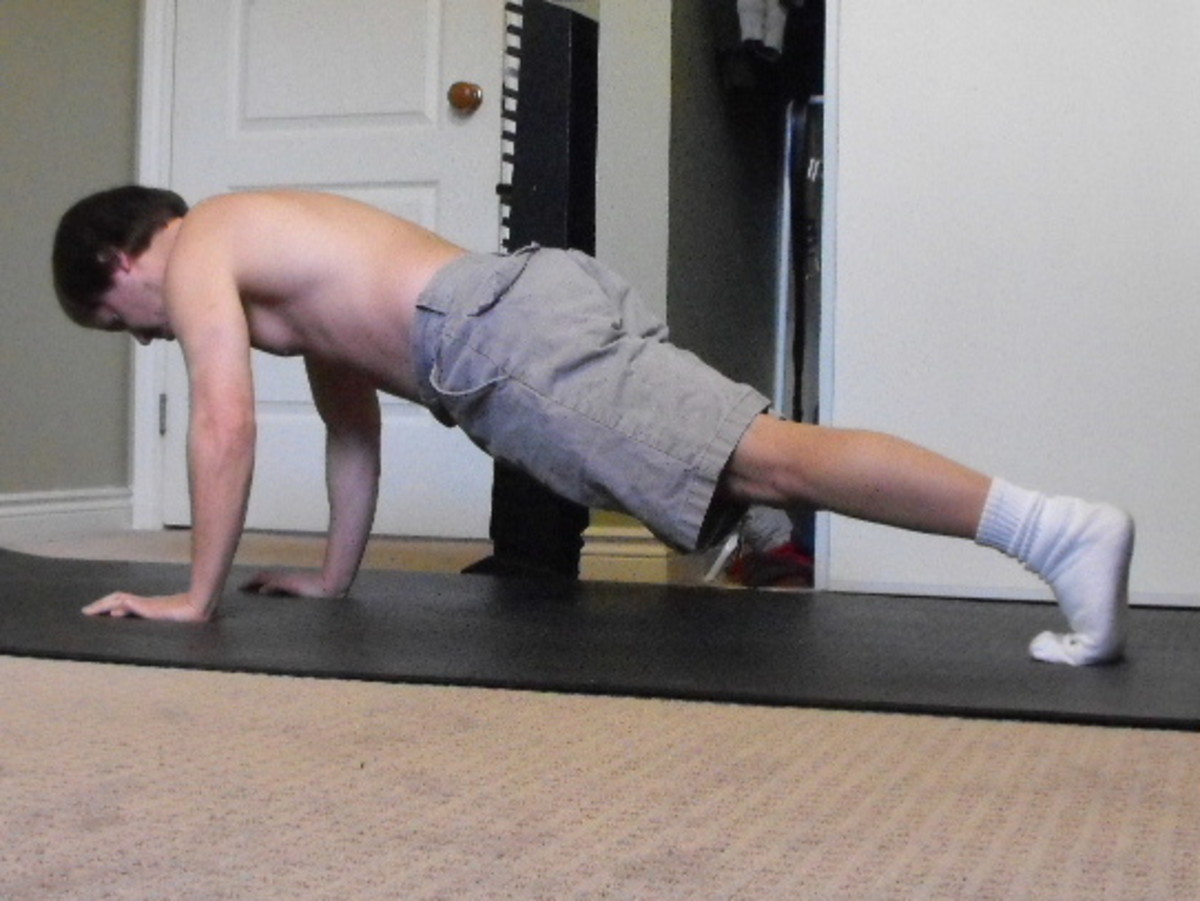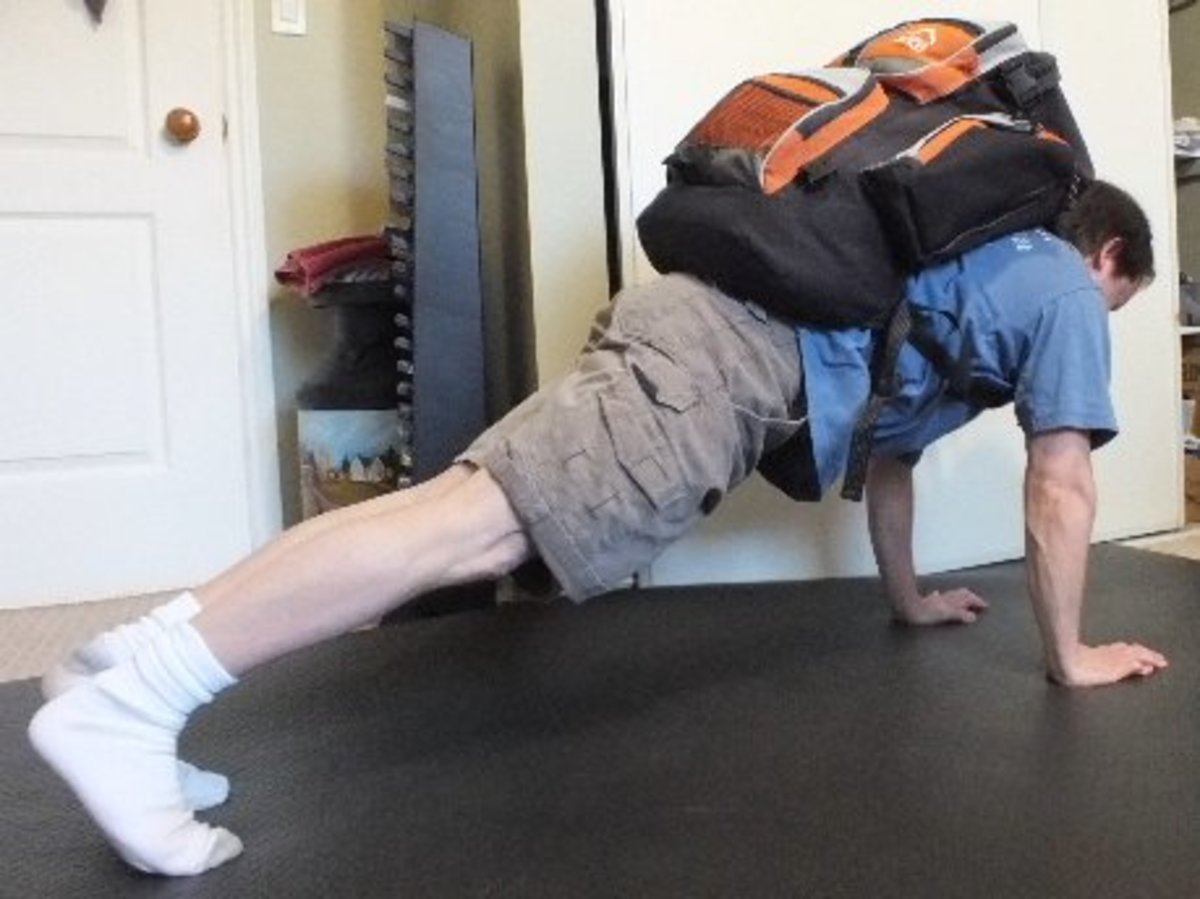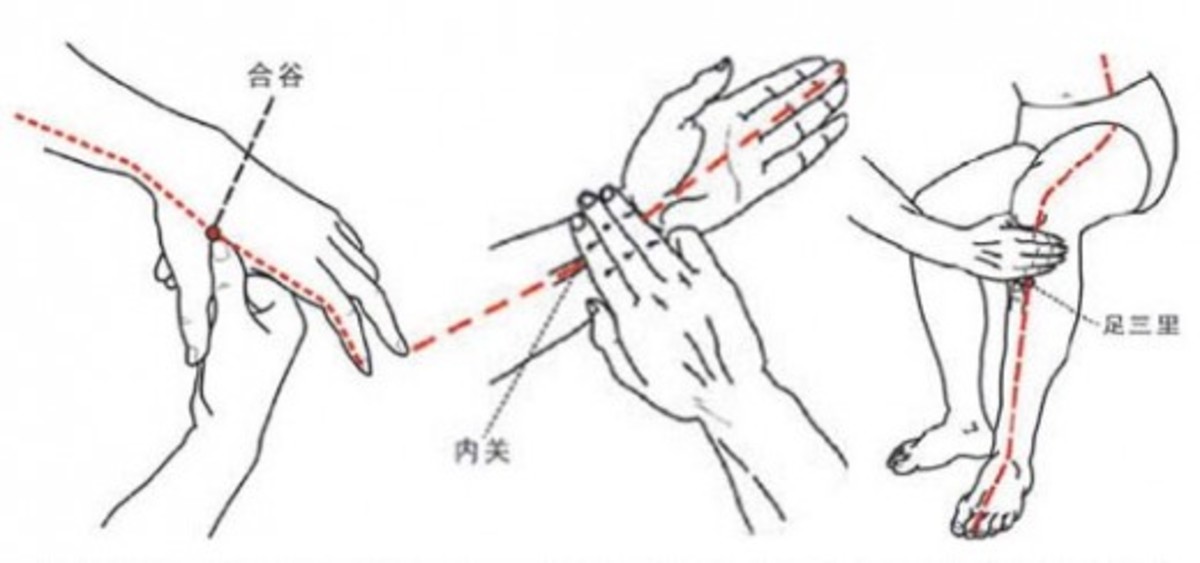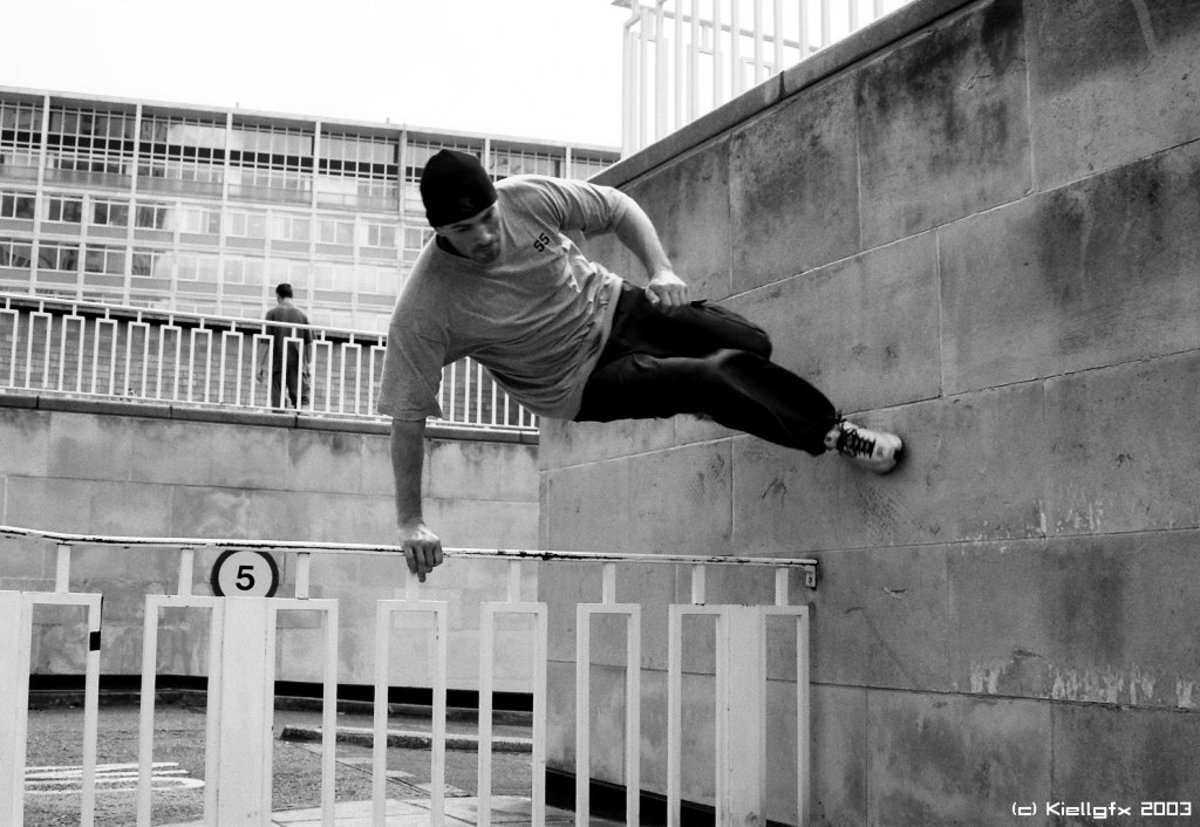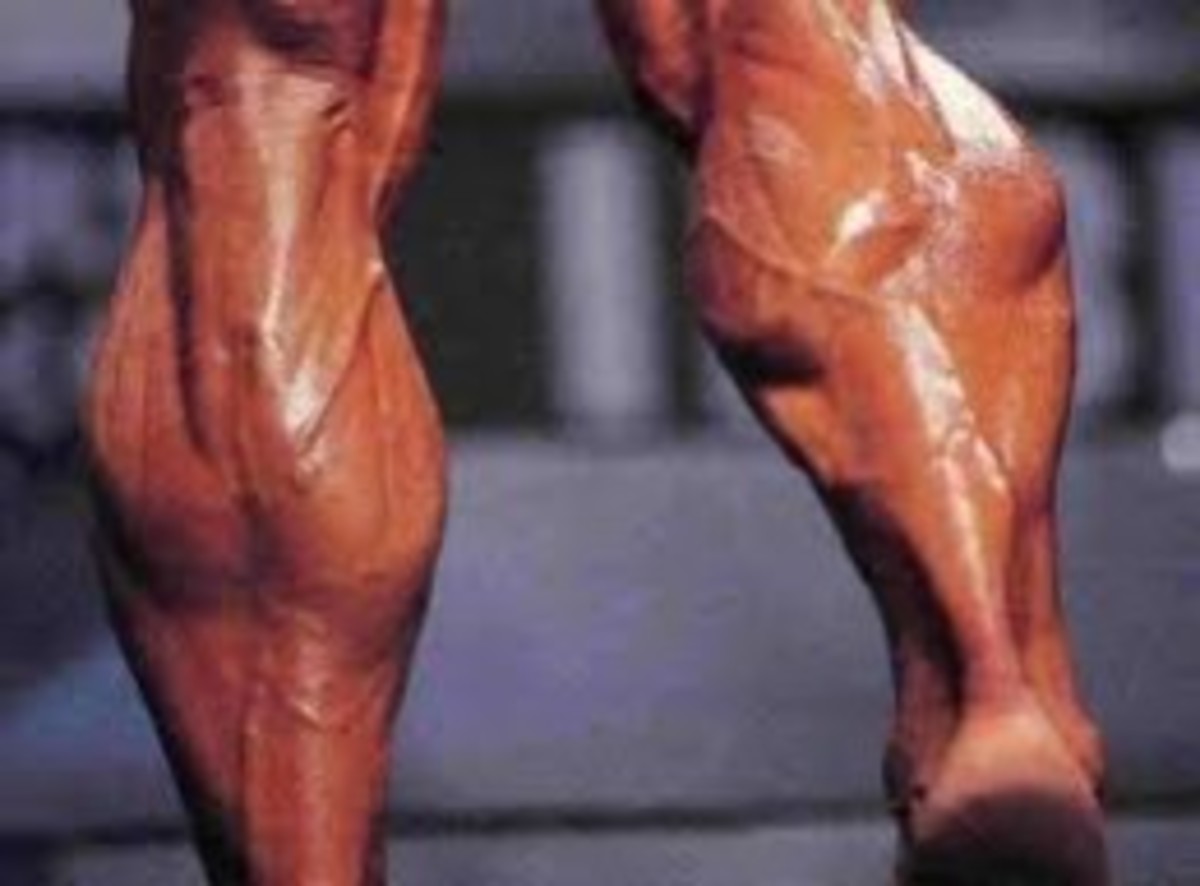Push Up
Push Ups, or press ups as they’re known in the United Kingdom, are considered by many to the classic upper body exercise.
They can be performed anywhere, with no equipment. If you can lie on the floor you can get an upper body workout.
Yes they are completely free; you can do them in the gym, in the park, at home or even in the hotel room. Push ups are a great way to work the upper body when a gym is not available, or indeed if you do not want to use one at all.
The push up is a simple pushing motion, moving your body against gravity using primarily your chest and triceps.
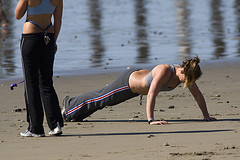
How to do a Push Up
In the prone position (lying facing down) put your hands flat on the floor a little wider than shoulder width apart.
Put your feet together, and get on your toes and balls of your feet.
Exhale as you push your body upwards, until your arms are extended.
Straighten your arms but be careful not to lock your elbows.
Pause briefly and inhale while lowering your body back towards the floor, until you are a few inches from the ground, your upper arms should be parallel to the floor.
Repeat the raising and lowering of your body for the desired number of repetitions.
Your body should be in a straight line from your toes to your shoulders.
Looking forwards, instead of at the floor will help with the straightening of the spine.
Maintaining a straight body will engage your lower back and abdominal muscles.
There are many variations of the traditional push up which can serve to either increase or decrease the exercise intensity, focus more attention on a particular muscle or develop explosive power.
Get On Your Knees
To make the push up easier, drop to your knees. This will reduce the amount of your bodyweight your chest and arms have to push up and will allow you to do more repetitions.
There Is A Great Distance Between Your Knees & Your Toes!
You may be looking at your legs just now and wondering what I’m talking about.
There is a marked difference in intensity between the standard “on your toes” push and the knee equivalent and it will take some time before moving from knees to your toes.
It is perfectly acceptable to do standard push ups and then crank a final few push ups on your knees. Make sure you keep your body straight from your knees to your shoulders.
Incline Push Up - Hold That Wall Up!
The standard push up distributes the body’s weight equally between the upper and lower body. If the movement proves too difficult we need to reduce the weight our chest and arms are pushing.
By elevating the upper body, the incline push up can do two things:
- Decrease the intensity of the push up movement by redistributing more body weight to the legs.
- Focuses more on the lower pectoral muscles.
Wall Press
The “easiest” form of push up would be with the body almost vertical. With the hands on a wall, take a step away from the wall. Push your chest away from the wall, straightening the arms, pause and repeat.
As this becomes achievable, move your feet further from the wall to raise the intensity of the incline push up.
To take the exercise further, perform the movement with the hands on a bed, or bench.
Bed/Box Push Up
A more intensive exercise than the wall press, a greater amount of your body weight is pushed by the chest and shoulders; effectively the closer your hands are to the ground the harder the push up will be.
With your hands on, say a bench, perform the standard push up movement.
Decline Push Up - Put Your Feet Up!
Are you looking to:
- Increase the intensity of your push ups?
- Develop the upper pectoral muscles more?
You can use Decline push ups to achieve both of these!
By lifting your legs off the ground, resting them on a bench for example, you are increasing the proportion of your body weight (more than 50%) that your upper body has to push.
The more elevated your lower body is, the harder you can make the push up, placing a greater burden on your upper body and building greater strength.
The most difficult form of elevated push up would be a hand stand push up, where your entire body weight is being pushed upwards by the upper body muscles.
This also requires a great deal of control, to remain in position, and works the abdominal and lower back muscles intensively as a result.
Put Your Hands Together For The Diamond Press Up
Your hand position can be altered to focus more on either the triceps or the chest.
By moving your hands further apart, you use the chest muscles more while moving the hands together will focus more on the triceps, and the outside of the pectorals.
A very intensive push which focuses on the triceps and outer chest are narrow hand or Diamond push ups.
In the standard push up position, move your hands together until you finger tips and thumbs are touching, making a diamond shape between your fingers.
Performing this push up will hit the triceps extremely hard, by placing a large portion of the body’s weight on the triceps.
The diamond push up is not an exercise to execute easily and a gradual narrowing of the hands would be required develop the triceps’ strength to complete the manoeuvre.
Developing Muscular Endurance
Traditionally a person’s “strength” in push up terms was measured by the maximum number they could achieve. This would measure a person’s muscular endurance in performing repetitions of a specific exercise. This could be used to benchmark an individual’s level of strength and allow a training plan to be developed.
For example, the military may wish their new recruits to be able to do say, 100 push ups.
Muscular endurance would be developed by a maintained overload of the muscles, performing a standard push up as many times as possible and increasing the maximum number of press ups achieved over time.
By performing a Superset of Incline, Standard, Decline, and Narrow hand push ups, you could work the chest intensively and with each of the variation working different areas of the chest, you will be able to do build greater strength in a shorter period of time.
Explosive, Functional Strength for Sports
A burst of power in the final minutes of a match can be the difference between winning and losing, be it that match winning block, tackle or throw. Explosive strength allows sportsman to get away from the competition.
Explosive strength would be developed using Plyometric push ups.
Plyometrics - Push It To The Limit
Applying a fast twitch explosive energy into a push up will build the functional strength relied upon by sportsmen.
The essence of the Plyometric push up is the rapid succession of bursts of strength.
Taking the standard push up as the base, explode upwards when straightening the arms, your hands will leave the ground, land on your hands an repeat the explosive movement immediately.
The intensity of this movement can be increased by clapping the hands together while in the air. For the extremely talented, clapping the hands once in front and once behind your body will add a further dimension to the explosive push up.
Next Steps
The push up is a great compound exercise for the upper body which can be tailored to fit everyone’s needs.
Regardless of how strong or how fit you are your will be able to a push up of some description and, with time and effort, develop your upper body for greater strength, definition and a higher degree of functional fitness.
Now drop and give me 20!

